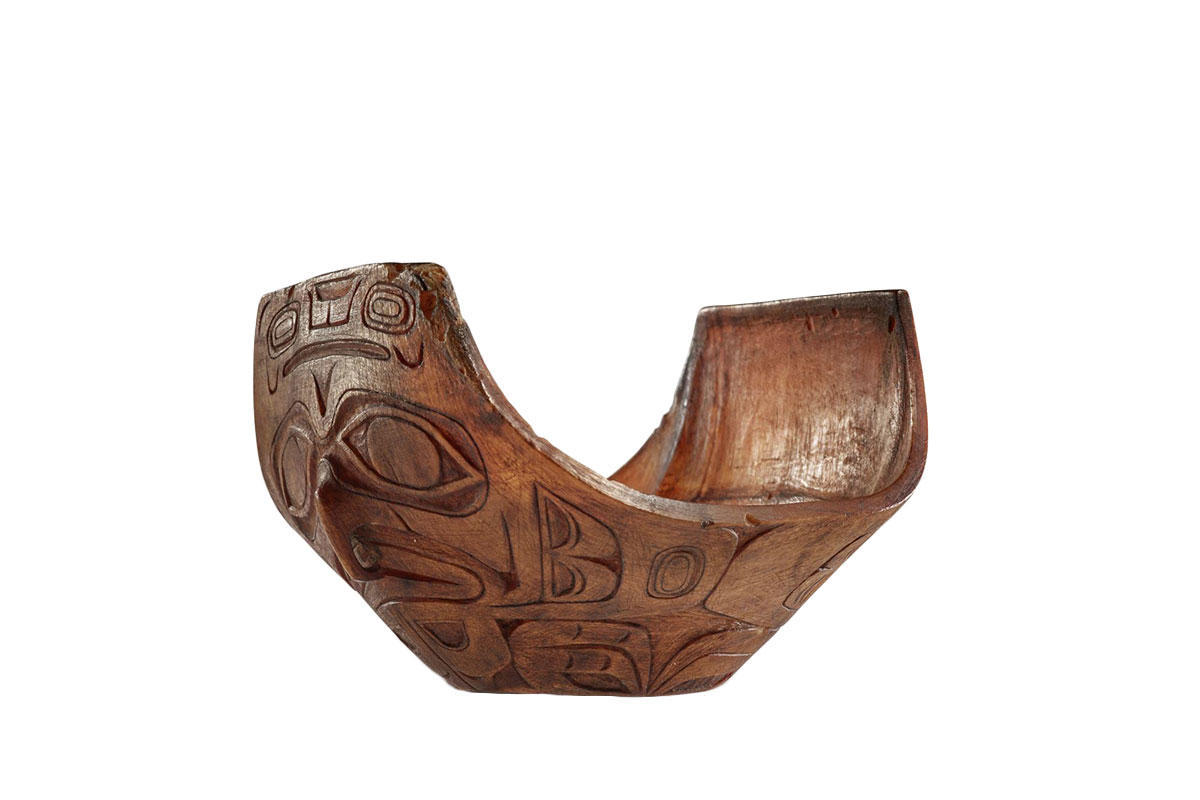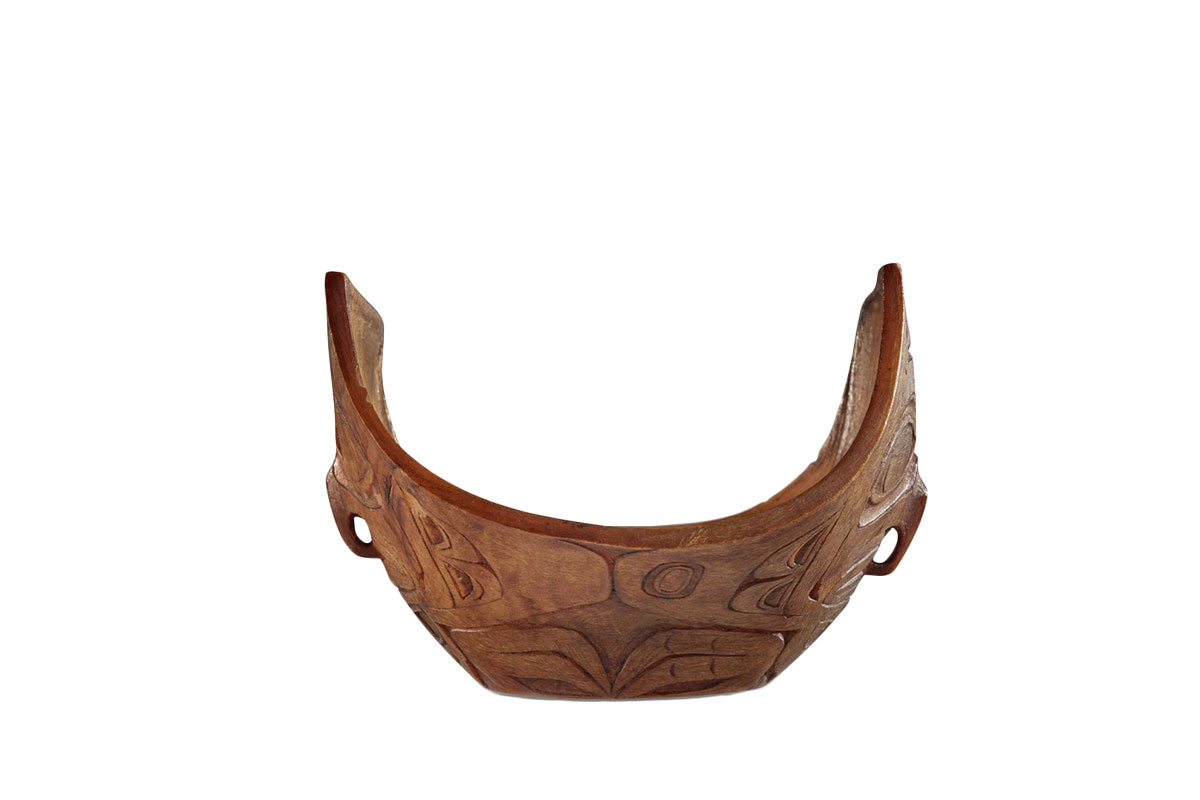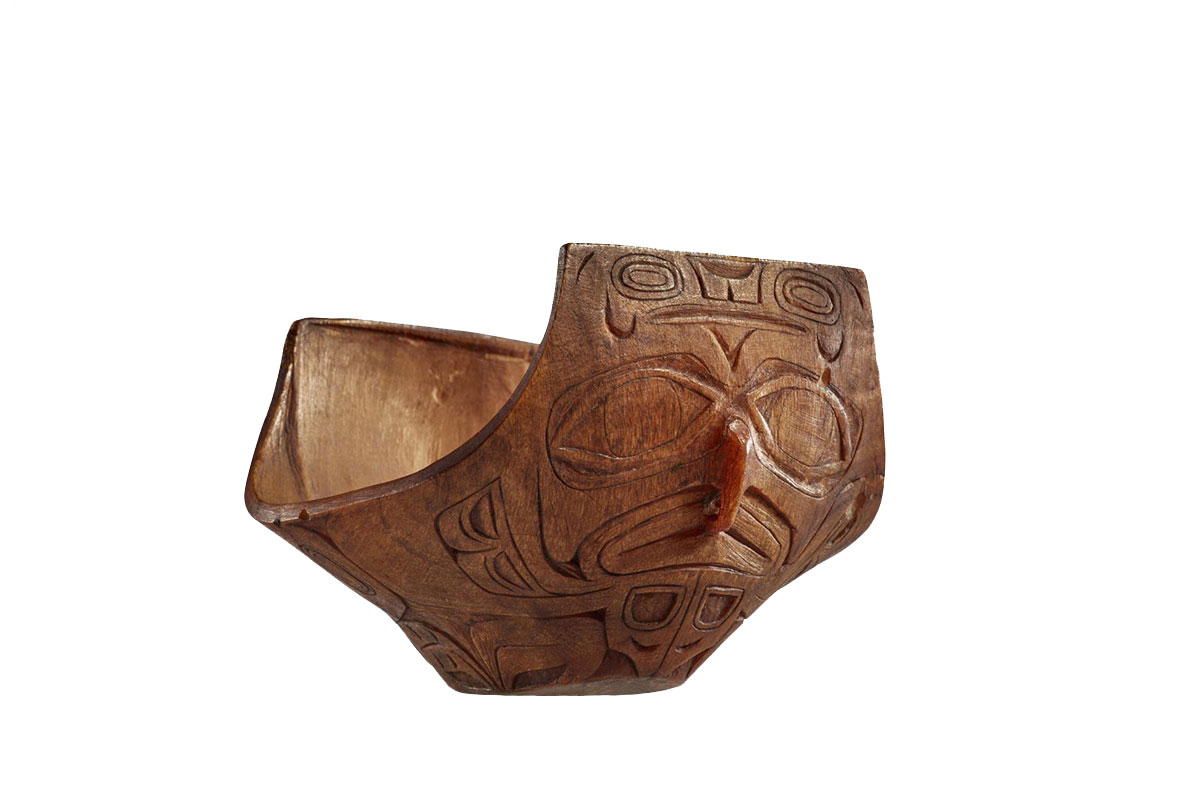Horn Bowl
Haida Gwaii, British Columbia
ca. 1840
mountain sheep horn
length: 4 ¾"
Inventory # N4455
Sold
Provenance
The Amy & Elliot Lawrence Collection, New York, NY
RELATED EXAMPLES
The Burke Museum, Seattle, WA, No. 1-3003 - See: Bill Holm, Spirit and Ancestor, Seattle: University of Washington Press, 1987, pl. 60 for a bowl by the same artist
Bill Holm, Box of Daylight, Seattle: University of Washington Press, 1984, pl. 123 for a bowl by the same artist
Seattle Art Museum, No. 85.356 - See: Steve Brown, The Spirit Within, New York: Rizzoli, 1995, pl. 44 for a ladle by the same artist
Feast bowls carved from mountain sheep horn are among the most technologically advanced creations from the Northwest Coast. The medium requires the artist to manipulate an extremely rough spiral horn of irregular thickness into a bilaterally symmetrical vessel. The hard outside must be carefully thinned down to reveal the soft interior of the horn, which is repeatedly boiled and carefully widened until the final shape exceeds the dimensions of the original horn.
The artist of the graceful feast bowl illustrated here has perfected the long process of softening and shaping the medium, creating a particularly beautiful outward-flaring shape. The even thinness and symmetry of the present bowl are remarkable, its height, width and depth almost equal in size. The exterior of the bowl is masterfully carved with symmetric imagery, both ends showing avian faces with protruding recurved beaks. A second zoomorphic face emerges from the tufts of feathers at the top of the head. This, alongside finely grooved breast feathers, possibly indicate a horned owl, though a precise identification is not possible. The bird’s claws are tucked below elegantly carved wings along the sides of the bowl, the tips and talons converging at the centre.
This commanding horn bowl is highly unusual in its diminutive scale, being just over four inches tall. Feast bowl were the personal belongings of high ranking community members, manifesting inherited family crests and the associated rights and privileges. The small scale of the present bowl suggests that it was used for individual, rather than communal consumption of fish or seal oils during great feasts. Compact in scale, this cleverly conceived and flawlessly executed feast bowl beautifully captures the whimsical appearance of a small bird.







